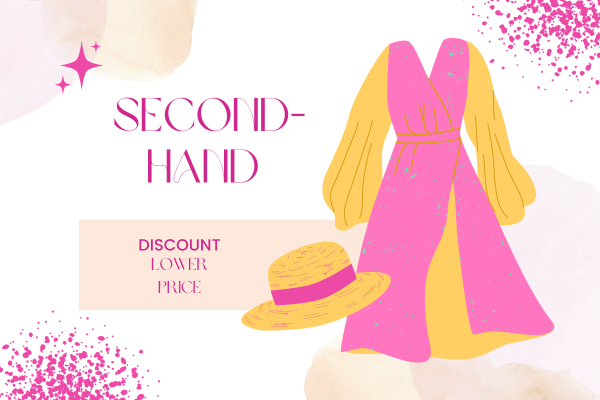In today’s world of fast fashion and constantly changing trends, second-hand shopping has emerged as a sustainable and budget-friendly way to refresh your wardrobe, decorate your home, or find unique treasures. With the rise of online platforms, buying second-hand items has never been easier. In this blog post, we’ll explore the top second-hand shopping websites and provide you with some handy tips on how to make the most of your online thrifting experience.
Top Second-Hand Shopping Websites
- eBay: eBay is a veteran in the online marketplace game. You can find everything from clothing to electronics, and of course, a plethora of second-hand items. Be sure to check seller ratings and reviews before making a purchase.
- Etsy: If you’re looking for unique and handcrafted items, Etsy is the go-to platform. It’s a treasure trove for vintage and one-of-a-kind pieces, from clothing to home decor.
- ThredUp: ThredUp specializes in second-hand fashion, offering a wide selection of clothing, shoes, and accessories for men, women, and kids. They also have a Clean Out Kit option for selling your gently used clothing.
- Poshmark: Poshmark is a social marketplace where users can buy and sell clothing, shoes, and accessories. It’s a great platform for finding trendy fashion at affordable prices.
- Depop: Depop is a favorite among fashion-forward millennials and Gen Zers. It’s a mix of vintage, designer, and streetwear fashion, with a strong emphasis on community and individual style.
- Facebook Marketplace: Facebook Marketplace allows you to buy and sell second-hand items within your local community. It’s an excellent option for finding furniture, electronics, and other household goods.
- Craigslist: Craigslist is another local marketplace that offers a wide range of second-hand items. It’s particularly useful for larger items like furniture and appliances
Tips for Buying Second-Hand Items Online
Now that you know where to shop, here are some tips to help you navigate the world of online second-hand shopping effectively:
⦿ Know Your Measurements
Second-hand items may not always come with standard sizing, so knowing your measurements is crucial to finding the right fit.
⦿ Check the Item’s Condition
Pay close attention to the item’s condition and read the product description thoroughly. Look for any signs of wear, stains, or damage.
⦿ Ask Questions
Don’t hesitate to reach out to the seller if you have any questions or need more information about the item. A reputable seller will be happy to provide additional details.
⦿ Negotiate and Compare Prices
Many second-hand sellers are open to negotiation. If you find an item you love but think the price is too high, politely make an offer. Also, compare prices across different platforms to ensure you’re getting a fair deal.
⦿ Check Return Policies
Understand the return policies of the platform and the seller. Some sellers may offer returns, while others may sell items “as-is.”
⦿ Pay Securely
Use secure payment methods provided by the platform, such as PayPal or credit cards. Avoid sending cash or making payments through unverified methods.
⦿ Leave Feedback
After your purchase, leave feedback for the seller. This helps build trust within the online second-hand community and rewards excellent sellers.
⦿ Be Patient
Finding the perfect second-hand item may take some time and patience. Keep checking your favorite platforms regularly for new listings.
Second-hand shopping is not only environmentally friendly but also an excellent way to discover unique items that tell a story. With the convenience of online shopping and the wealth of options available on top second-hand websites, you can embrace sustainable fashion and decor without breaking the bank. Remember to stay informed, ask questions, and enjoy the thrill of the hunt as you embark on your online thrifting journey. Happy shopping!


























